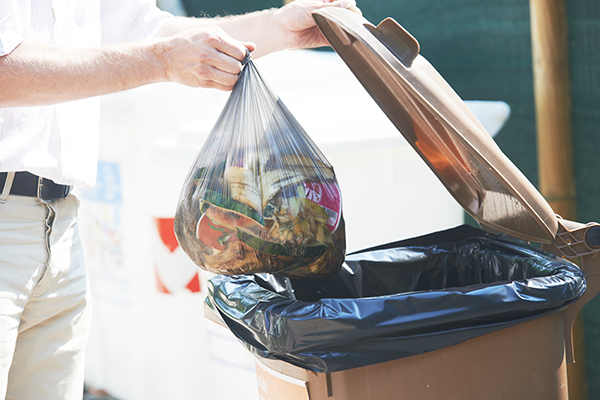Thanksgiving Food Safety: Separating Fact from Fiction
Most blogs that I write are geared toward the foodservice professional preparing food in commercial foodservice operations. This one is no different, but it intentionally straddles the line between home and commercial foodservice. Regardless of whether you are preparing turkey dinners for paying guests or gathering with friends around your own table, the principles of food safety remain the same.
Unfortunately, the Thanksgiving holiday also brings with it a collection of myths and misconceptions that can put guests at risk for foodborne illness. As someone who has spent decades in food safety, I’ve heard countless well-intentioned but dangerous pieces of advice. The myths I’m about to dispel affect both commercial kitchen employees and home cooks alike, and the consequences of getting it wrong are equally serious.
……This Thanksgiving season, commit to evidence-based food safety practices and don’t let your operation, or your home, become a statistic……
- Myth #1: You Should Wash Your Turkey Before Cooking It
This is perhaps the most persistent and dangerous Thanksgiving myth. Many home cooks and even some foodservice professionals believe that rinsing a raw turkey under running water will remove bacteria and make it safer to eat. But the truth is the exact opposite!
When you rinse raw poultry under running water, you can splash water everywhere and potentially spread Salmonella and Campylobacter. Research has shown that bacteria can splash up to three feet away from your sink during rinsing. Worse yet, 60% of the subjects in one study had bacteria in their sink after washing or rinsing poultry; 14% had bacteria in their sinks even after they attempted to clean it.
The only way to safely kill bacteria on turkey is through proper cooking to an internal temperature of 165°F. Skip the rinse, handle the bird carefully, and save yourself and others from a foodborne illness.
- Myth #2: If the Turkey Looks Done, It’s Safe to Eat
Visual cues like golden-brown skin, clear juices, or white meat are not reliable indicators that your turkey has reached a safe internal temperature. The only way to know for certain that your turkey is safe is by using a calibrated food thermometer.
Insert the thermometer into the thickest part of the breast, the innermost part of the thigh, and the innermost part of the wing. All three locations must reach 165°F to ensure that harmful bacteria have been destroyed. Don’t rely on pop-up thermometers that come with some turkeys; these are often inaccurate and may pop before the bird has reached a safe temperature throughout.
For foodservice operators serving multiple birds, checking each one is non-negotiable. Document your temperatures and maintain your records. If an illness complaint arises, your temperature logs will be your best defense.
- Myth #3: A Little Pink in the Turkey Means It’s Undercooked
Because we are talking about using thermometers and cooking your turkey to 165°F, it is also important to note that while pink turkey meat often indicates undercooking, it’s not always the case. Younger turkeys and those that have been smoked or cooked at lower temperatures may retain a pink color, even when properly cooked to 165°F. The pink color can result from hemoglobin in the meat, reactions with gases in the oven, or the age of the bird.
This is why temperature, not color, must be your guidepost. If your thermometer reads 165°F in all the required locations, the turkey is safe regardless of color. Conversely, turkey meat can appear white and still be undercooked if it hasn’t reached the proper internal temperature.
- Myth #4: Stuffing Cooked Inside the Turkey is Traditional and Safe
While cooking stuffing inside the turkey cavity may be traditional, it’s also risky. The stuffing absorbs raw turkey juices as it cooks, and the center of the stuffing often doesn’t reach the safe temperature of 165°F by the time the turkey meat is properly cooked. This creates a perfect scenario for foodborne illness. Either you undercook the stuffing or you overcook the turkey.
For perfectly cooked turkey and stuffing, cook your stuffing separately in a casserole dish. For foodservice operations, I strongly recommend the separate cooking method to minimize risk and ensure consistent quality.
- Myth #5: You Can Thaw Turkey on the Counter
I would think that most foodservice employees and operators know the danger of thawing food on the counter. Unfortunately, the dangerous practice of counter-thawing remains common in both the home and foodservice operations.
When you thaw a turkey at room temperature, the outer portions enter the temperature danger zone (41°F to 135°F) while the inside remains frozen. Bacteria multiply rapidly in this zone, potentially reaching dangerous levels before cooking even begins.
Safe thawing methods include refrigerator thawing (24 hours for every 4-5 pounds), cold water thawing (30 minutes per pound, changing water every 30 minutes, or under continuously running water), or microwave thawing (but for food quality purposes I don’t know that I would recommend microwave thawing for a turkey). Plan ahead and use refrigerator thawing whenever possible. A 20-pound turkey requires 4 to 5 days of thawing time in the refrigerator, so plan your production schedule accordingly.
- Myth #6: Hot Food Cannot Go Straight into the Refrigerator
When I started in the foodservice industry at 14 years of age, I remember the prep cook at the time training me that I must let the soup that just came out of the steam jacketed kettle set on the counter for an hour or so before putting into the cooler. We did not want to warm up the cooler after all. While I believe this myth is not common in the foodservice industry today, it is still a common misconception among home cooks.
Let me be clear: you absolutely should refrigerate hot foods promptly rather than letting them cool on the counter. The old advice about letting food cool to room temperature first is outdated and dangerous.
Modern refrigerators can handle hot foods without significantly affecting their internal temperature, especially if you follow proper cooling techniques. For large quantities like whole turkeys or big pots of gravy, divide them into smaller, shallow containers to promote rapid cooling. The goal is to cool foods from 135°F to 70°F within two hours, and from 70°F to 41°F or below within an additional four hours. For foodservice operators, use ice baths, shallow pans, and proper portioning to meet these time requirements.
- Myth #7: Leftovers are Safe as Long as They Smell Okay
The sniff test is not a reliable indicator of food safety. Many dangerous bacteria produce no noticeable odor. If foods are handled correctly before being stored for leftovers, and then properly reheated to 165°F before consuming, they are safe to eat for seven days. USDA advises consumers to consume leftovers within three to four days, but the food code allows foodservice operators seven days.
Be sure to label all leftovers with preparation dates and discard anything that exceeds safe storage times, regardless of appearance or smell.
This Thanksgiving season, commit to evidence-based food safety practices: use thermometers, practice proper hand hygiene, avoid cross-contamination, maintain proper holding temperatures, cool foods rapidly, and when in doubt, throw it out. Remember, foodborne illness doesn’t take holidays. The CDC reports that November and December often see spikes in foodborne illness cases, many related to improper food handling during holiday gatherings. Don’t let your operation, or your home, become a statistic.
Have questions about Thanksgiving food safety or other holiday food handling concerns? Reach out to me at foodsafety@foodhandler.com. I’m always happy to help foodservice operators navigate the complexities of food safety. Risk Nothing.
READ MORE POSTS
Getting Your Playbook for Food Safety Organized
As anyone who has ever worked in a foodservice operation knows, from the time food is received in your establishment to the time it is served to your customers, following proper food safety practices is crucial. What many don’t often think about is this time really should extend from the time the manager places their orders with their suppliers (including which purveyors you utilize), through the time the food is consumed – even if that consumption occurs off your premises and days after the original order was picked up by the guest. This is something that has certainly been highlighted by the pandemic as customers across the nation are utilizing take-out, curbside to go, and third-party delivery options more so now than ever before.
Getting Started with Building the Infrastructure
Hopefully in our first January blog, we convinced you of the importance of establishing an infrastructure within your operation to support a safe food culture. So, how does one go about doing this? Well, like any major project, break it into small bites. In our opinion, having a written guide for employees that documents expectations related to food safety basics of employee health and hygiene, temperature controls, and cleaning and sanitizing is the first step. Having this documentation serves as a reference for training and helps fulfill the mission of most foodservice operators which is to serve safe, quality food.
Food Safety Resolutions for the New Year
Finally, 2020 is in our rearview mirror and we can all turn the page to 2021! Resolutions for the new year might be more of the same from prior years (lose weight, exercise more, less screen time, etc.) OR you may have identified new practices to implement in your operation. If the latter, likely goals included some practices related to food safety – especially given the turmoil of 2020 and heightened concern by customers. It is our philosophy that attention to safe food handling practices is a win-win for any operation because of the direct relationship between food safety and food quality, which in turn leads to customer satisfaction. This past year has also demonstrated that attention to safety can affect the bottom line. Thus, the topic of our first SafeBites webinar for 2021 is on the topic of the return on investment of food safety, it is scheduled for January 20, so register now and please plan to attend.
To Toss or Not to Toss? That is the question.
Our first blog for the month emphasized the basic safe food practices needed to keep you and your guests healthy (and happy!), especially during these times of COVID. The impact of foodborne illness can range from an uncomfortable few days to hospitalization or death. Foodborne illness IS preventable and the steps taken to keep food safe also maintain quality of food, and ultimately profitability. Think of attention to food safety as part of quality control and a win-win business strategy. Knowledge about food safety can be helpful when controlling costs as making wise decisions when determining the fate of unserved food can affect the bottom line.










